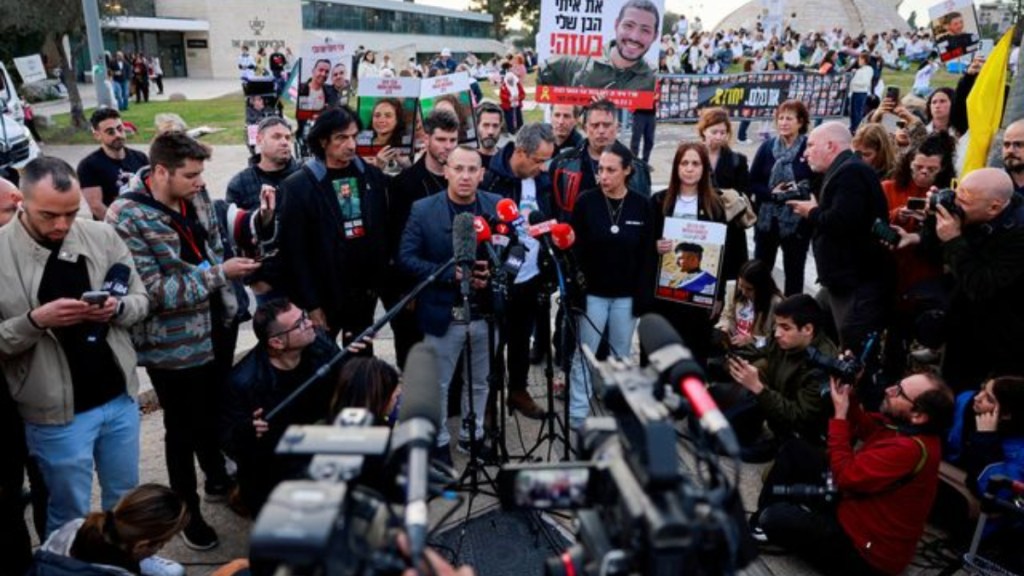If reports are to be believed, negotiators are nearing a breakthrough on Gaza ceasefire after intense discussions in Qatar. Representatives from Israel, Hamas and mediators from Qatar, US and Egypt held talks which lasted for over 8 hours. Optimism has surged since officials reported a truce and revealed that a hostage-release agreement is closer than ever, Reuters reported.
US Secretary of State Antony Blinken announced on Tuesday that an agreement on a Gaza ceasefire and a hostage exchange was nearly finalised, with the decision now resting with Hamas. Speaking at an Atlantic Council event, Blinken described the situation as unprecedentedly close to resolution. “”It’s right on the brink. It’s closer than it’s ever been before. But, right now, as we sit here, we await final word from Hamas on its acceptance, and until we get that word, we’ll remain on the brink,” Blinken said. Qatar’s foreign ministry spokesperson, Majed Al-Ansari confirmed that both sdes were reviewing a draft proposal and were finalising the remaining details.
What are the challenges in finalising Gaza ceasefire deal?
Despite progress in talks, obstacles remained. A senior Hamas official revealed that the group awaited Israeli maps detailing troop withdrawal plans before providing their formal response.
US President Joe Biden expressed hope, emphasizing that a deal was imminent. Biden and Egyptian President Abdel Fattah El-Sisi discussed developments, committing to close coordination in the coming hours. The Whie House said that there is an urgent need for swift implementation of an agreement.
Israeli and Hamas Perspectives
Hamas declared the negotiations had reached their final stage, expressing optimism about a resolution. An Israeli official noted significant progress but acknowledged unresolved issues. In Rome, Israeli Foreign Minister Gideon Saar suggested a potential agreement would likely secure majority support in Israel’s coalition government, despite opposition from nationalist factions.
Why is Gaza ceasefire important?
If successful, the phased ceasefire would mark the end of a devastating conflict that has left tens of thousands dead, displaced the majority of Gaza’s population, and exacerbated tensions across the Middle East. The truce could also ease violence in the West Bank, Lebanon, Syria, Yemen, and Iraq, and reduce fears of a broader war involving Israel and Iran.
What are the terms of the agreement?
The proposed deal includes a swap. Israel would recover approximately 100 hostages taken during the October 7, 2023, attacks, while Palestinian detainees would be released. US Secretary of State Antony Blinken emphasised the importance of Hamas agreeing to the outlined terms.
The first phase of the ceasefire deal involves the release of 33 hostages, including children, women (some of whom are soldiers), and other vulnerable individuals. In exchange, Israel would free 1,000 Palestinian prisoners over a 60-day period. Israel would also gradually reduce its military presence in Gaza.
Continued violence amid negotiations
Despite ongoing talks, Israeli strikes killed at least 15 people on Tuesday in Gaza’s Deir al-Balah and Rafah areas, according to medical sources. The United Nations highlighted challenges in preparing humanitarian assistance, citing border and security uncertainties.
Families of Israeli hostages expressed a mix of hope and desperation. “We can’t miss this moment,” said Hadas Calderon, whose family members are captives.
The war began after Hamas-led fighters launched an attack on Israel on October 7, 2023, killing 1,200 people and capturing over 250 hostages. Israel responded with a large-scale military assault, resulting in over 46,000 Palestinian deaths, according to Palestinian health officials.
Both sides have long supported the idea of a ceasefire and a prisoner swap, yet fundamental disagreements remain. Hamas demands an end to the war, while Israel insists on dismantling Hamas entirely. With US President-elect Donald Trump’s inauguration on January 20, 2025, looming as a deadline, the window for a deal is narrowing.
(With Reuters Inputs)

